Experimental and Numerical Investigation of the Mechanical Properties of a Fiber-Reinforced Geopolymer Mortar Blast Resistant Panel
Abstract
:1. Introduction
2. Experimental Study
2.1. Material
2.2. Experimental Procedure
2.2.1. Geopolymer Mechanical Investigation
2.2.2. Experimental Setup and Measurement
3. Experimental Results Discussion
3.1. Geopolymer Mechanical Performance
3.2. Experimental Results
4. Finite element Analysis
4.1. Modelling
4.2. Material Model
4.2.1. Concrete
4.2.2. Galvanized Steel Plates and Iron Wires
4.3. Comparison of Experimental and Numerical Results
4.3.1. Blast Pressure
4.3.2. Deformation of Fiber-Reinforced Geopolymer Mortar
5. Conclusions
- Significant improvements in compressive strength were observed at the age of 7 days for all types of fiber-reinforced geopolymer mortar. Notably, the specimens reinforced with a weight ratio of 0.5% carbon fiber and 0.5% ultra-high performance PE fiber demonstrated a strength of 73.96 MPa, indicating an increase of 8.0%.
- At the age of 7 days, an enhancement in flexural strength was observed for all types of fiber-reinforced geopolymer mortar. In particular, the specimens reinforced with a weight ratio of 0.5% carbon fiber and 0.5% Kevlar fiber exhibited a remarkable strength of 18.06 MPa, signifying a significant increase of 40.7%.
- At the age of 7 days, an enhancement in impact resistance was observed for all types of fiber-reinforced geopolymer mortar. In particular, the specimens reinforced with a combination of carbon fiber and ultra-high performance PE fiber exhibited superior impact resistance compared to the other specimens.
- Overall, the results showed that the incorporation of fibers significantly improved the explosive resistance capacity of the geopolymer mortar blast resistant panel. In particular, when different types of fibers were combined, the displacement difference among most fiber-reinforced geopolymer mortar blast resistant panels was smaller compared to the benchmark panels.
- From the experimental and numerical data, it is clear that the panel displacements measured in the experiments were larger than those in the simulations. Notably, when the AUTOMATIC contact keyword was employed, the results were closer to the experimental data. Upon considering the failure modes of the panels, this discrepancy can likely be attributed to the worse efficacy of the bond between the coating enamel and screws in the blast testing.
Author Contributions
Funding
Conflicts of Interest
References
- Munir, Q.; Abdulkareem, M.; Horttanainen, M.; Kärki, T. A comparative cradle-to-gate life cycle assessment of geopolymer concrete produced from industrial side streams in comparison with traditional concrete. Sci. Total Environ. 2023, 865, 161230. [Google Scholar] [CrossRef] [PubMed]
- Jayanthi, V.; Avudaiappan, S.; Amran, M.; Arunachalam, K.P.; Qader, D.N.; Delgado, M.C.; Flores, E.I.S.; Rashid, R.S.M. Innovative use of micronized biomass silica-GGBS as agro-industrial by-products for the production of a sustainable high-strength geopolymer concrete. Case Stud. Constr. Mater. 2023, 18, e01782. [Google Scholar] [CrossRef]
- Deb, P.S.; Nath, P.; Sarker, P.K. The effects of ground granulated blast-furnace slag blending with fly ash and activator content on the workability and strength properties of geopolymer concrete cured at ambient temperature. Mater. Des. 2014, 62, 32–39. [Google Scholar] [CrossRef]
- Pasupathy, K.; Ramakrishnan, S.; Sanjayan, J. 3D concrete printing of eco-friendly geopolymer containing brick waste. Cem. Concr. Compos. 2023, 138, 104943. [Google Scholar] [CrossRef]
- Oyebisi, S.; Olutoge, F.; Kathirvel, P.; Oyaotuderekumor, I.; Lawanson, D.; Nwani, J.; Ede, A.; Kaze, R. Sustainability assessment of geopolymer concrete synthesized by slag and corncob ash. Case Stud. Constr. Mater. 2022, 17, e01665. [Google Scholar] [CrossRef]
- Goldsmith, W.; Sackman, J.L. An experimental study of energy absorption in impact on sandwich plates. Int. J. Impact Eng. 1992, 12, 241–262. [Google Scholar] [CrossRef]
- Ferri, R.; Sankar, B.V. Comparative study on the impact resistance of composite laminates and sandwich panels. J. Thermoplast. Compos. Mater. 1997, 10, 304–315. [Google Scholar] [CrossRef]
- Hou, W.; Zhu, F.; Lu, G.; Fang, D.N. Ballistic impact experiments of metallic sandwich panels with aluminium foam core. Int. J. Impact Eng. 2010, 37, 1045–1055. [Google Scholar] [CrossRef]
- Tabatabaei, Z.S.; Volz, J.S.; Baird, J.; Gliha, B.P.; Keener, D.I. Experimental and numerical analyses of long carbon fiber reinforced concrete panels exposed to blast loading. Int. J. Impact Eng. 2013, 57, 70–80. [Google Scholar] [CrossRef]
- Kong, X.S.; Wu, W.G.; Li, J.; Chen, P.; Liu, F. Experimental and numerical investigation on a multi-layer protective structure under the synergistic effect of blast and fragment loadings. Int. J. Impact Eng. 2014, 65, 146–162. [Google Scholar] [CrossRef]
- Mao, L.; Barnett, S.; Begg, D.; Schleyer, G.; Wight, G. Numerical simulation of ultra high performance fibre reinforced concrete panel subjected to blast loading. Int. J. Impact Eng. 2014, 64, 91–100. [Google Scholar] [CrossRef]
- Roshani, H.; Yousefi, M.; Gharaei-Moghaddam, N.; Khatibi, S.H. Flexural performance of steel-concrete-steel sandwich beams with lightweight fiber-reinforced concrete and corrugated-strip connectors: Experimental tests and numerical modeling. Case Stud. Constr. Mater. 2023, 18, e02138. [Google Scholar] [CrossRef]
- World Steel Association. Steel Statistical Yearbook 2022; World Steel Association: Brussels, Belgium, 2023. [Google Scholar]
- Majidi, B. Geopolymer technology, from fundamentals to advanced applications: A review. Mater. Technol. 2009, 24, 79–87. [Google Scholar] [CrossRef]
- Davidovits, J. Geopolymer Chemistry and Applications; Geopolymer Institute: Saint-Quentin, France, 2008. [Google Scholar]
- Das, S.; Saha, P.; Jena, S.P.; Panda, P. Geopolymer concrete: Sustainable green concrete for reduced greenhouse gas emission—A review. Mater. Today Proc. 2022, 60, 62–71. [Google Scholar] [CrossRef]
- Abdullah, M.M.A.B.; Kamarudin, K.; Binhussain, M.; Nizar, K.; Mastura, W.I.W. Mechanism and Chemical Reaction of Fly Ash Geopolymer Cement—A Review. Asian J. Sci. Res. 2011, 1, 247–253. [Google Scholar]
- Aisheh, Y.I.A.; Atrushi, D.S.; Akeed, M.H.; Akeed, S.; Tayeh, B.A. Influence of steel fibers and microsilica on the mechanical properties of ultra-high-performance geopolymer concrete (UHP-GPC). Case Stud. Constr. Mater. 2022, 17, e01245. [Google Scholar] [CrossRef]
- Meng, Q.; Wu, C.; Hao, H.; Li, J.; Wu, P.; Yang, Y.; Wang, Z. Steel fibre reinforced alkali-activated geopolymer concrete slabs subjected to natural gas explosion in buried utility tunnel. Constr. Build. Mater. 2020, 246, 118447. [Google Scholar] [CrossRef]
- Zhang, S.; Ji, X.; Zhou, W.; Liu, X.; Wang, Q.; Chang, X.; Tang, J.; Huang, C.; Lu, Y. High-flexural-strength of geopolymer composites with self-assembled nanofiber networks. Ceram. Int. 2021, 47, 31389–31398. [Google Scholar] [CrossRef]
- Bernal, S.; Gutierrez, R.D.; Delvasto, S.; Rodriguez, E. Performance of an alkali-activated slag concrete reinforced with steel fibers. Constr. Build. Mater. 2010, 24, 208–214. [Google Scholar] [CrossRef]
- UFC 3-340-02; Structures to Resist the Effects of Accidental Explosions. National Institute of Building Sciences: Washington, DC, USA, 2008.
- Zerfu, K.; Ekaputri, J.J. Nonlinear finite element study on element size effects in alkali-activated fly ash based reinforced geopolymer concrete beam. Case Stud. Constr. Mater. 2021, 15, e00765. [Google Scholar] [CrossRef]
- Venkatachalam, S.; Vishnuvardhan, K.; Amarapathi, G.D.; Mahesh, S.R.; Deepasri, M. Experimental and finite element modelling of reinforced geopolymer concrete beam. Mater. Today Proc. 2021, 45, 6500–6506. [Google Scholar] [CrossRef]
- Shweta, P.; Priti, S. Finite element analysis of beam-column joint behaviour utilizing glass fiber reinforced polymer bars and geopolymer concrete. Mater. Today Proc. 2023; in press. [Google Scholar]
- ASTM C109/C109M-20; Test Method for Compressive Strength of Hydraulic Cement Mortars (Using 2-in. or [50-mm] Cube Specimens). ASTM International: West Conshohocken, PA, USA, 2020.
- ASTM C293; Standard Test Method for Flexural Strength of Concrete (Using Simple Beam with Center-Point Loading). ASTM International: Philadelphia, PA, USA, 2001.
- ASTM D 5628; Standard Test Method for Impact Resistance of Flat, Rigid Plastic Specimens by Means of a Falling Dart (Tup or Falling Mass). ASTM International: West Conshohocken, PA, USA, 2018.
- Ahmad, S.H.; Arockiasamy, M.; Balaguru, P.N.; Ball, C.G.; Ball, H.P., Jr.; Batson, G.B.; Bentur, A.; Craig, J.R.; Craig, M.E.; Freedman, S.; et al. Measurement of Properties of Fiber Reinforced Concrete; American Concrete Institute: Farmington Hills, MI, USA, 1988. [Google Scholar]
- Dewey, J.M. The shape of the blast wave: Studies of the Friedlander equation. In Proceedings of the 21st International Symposium on Military Aspects of Blast and Shock, Jerusalem, Israel, 3–8 October 2010; pp. 1–9. [Google Scholar]
- Todd, S.P. Blast Loading in LS-DYNA; University of California: San Diego, CA, USA, 2012. [Google Scholar]
- Ramezani, A.; Modaresi, S.; Dashti, P.; GivKashi, M.R.; Moodi, F.; Ramezanianpour, A.A. Effects of Different Types of Fibers on Fresh and Hardened Properties of Cement and Geopolymer-Based 3D Printed Mixtures: A Review. Buildings 2023, 13, 945. [Google Scholar] [CrossRef]
- Abbas, A.N.; Aziz, F.N.A.A.; Abdan, K.; Nasir, N.A.M.; Huseien, G.F. A state-of-the-art review on fibre-reinforced geopolymer composites. Constr. Build. Mater. 2022, 330, 127187. [Google Scholar] [CrossRef]
- Yang, S.; Zhao, R.; Ma, B.; Si, R.; Zeng, X. Mechanical and fracture properties of fly ash-based geopolymer concrete with different fibers. J. Build. Eng. 2023, 63, 105281. [Google Scholar] [CrossRef]
- Launay, P.; Gachon, H. Strain and Ultimate Strength of Concrete under Triaxial Stress; 1971. Available online: https://repository.lib.ncsu.edu/bitstream/handle/1840.20/29024/H1-3.pdf?sequence=1 (accessed on 11 July 2023).
- Schwer, L.E.; Murray, Y.D. Continuous surface cap model for geomaterial modeling: A new LS-DYNA material type. In Proceedings of the Seventh International LSDYNA Users Conference, Dearborn, MI, USA, 19–21 May 2002; pp. 16–35. [Google Scholar]
- Murray, Y.D. Users Manual for LS-DYNA Concrete Material Model 159; Federal Highway Administration, Office of Research, Development, and Technology: McLean, VA, USA, 2007. [Google Scholar]
- Novozhilov, Y.V.; Dmitriev, A.N.; Mikhaluk, D.S. Precise Calibration of the Continuous Surface Cap Model for Concrete Simulation. Buildings 2022, 12, 636. [Google Scholar] [CrossRef]
- Yang, S.H.; Woo, K.S.; Kim, J.J.; Ahn, J.S. Finite element analysis of RC beams by the discrete model and CBIS model using LS-DYNA. Adv. Civ. Eng. 2021, 2021, 8857491. [Google Scholar] [CrossRef]
- Král, P.; Hušek, M.; Hradil, P.; Kala, J.; Maňas, P. Identification of Concrete Material Model Parameters Using Optimisation Algorithms. Adv. Mil. Technol. 2018, 13, 33–45. [Google Scholar] [CrossRef]
- Jiang, H.; Zhao, J. Calibration of the continuous surface cap model for concrete. Finite Elem. Anal. Des. 2015, 97, 1–19. [Google Scholar] [CrossRef]
- Madurapperuma, M.A.K.M.; Niwa, K. Concrete material models in LS-DYNA for impact analysis of reinforced concrete structures. In Applied Mechanics and Materials; Trans Tech Publications Ltd.: Bäch, Switzerland, 2014; pp. 173–178. [Google Scholar]

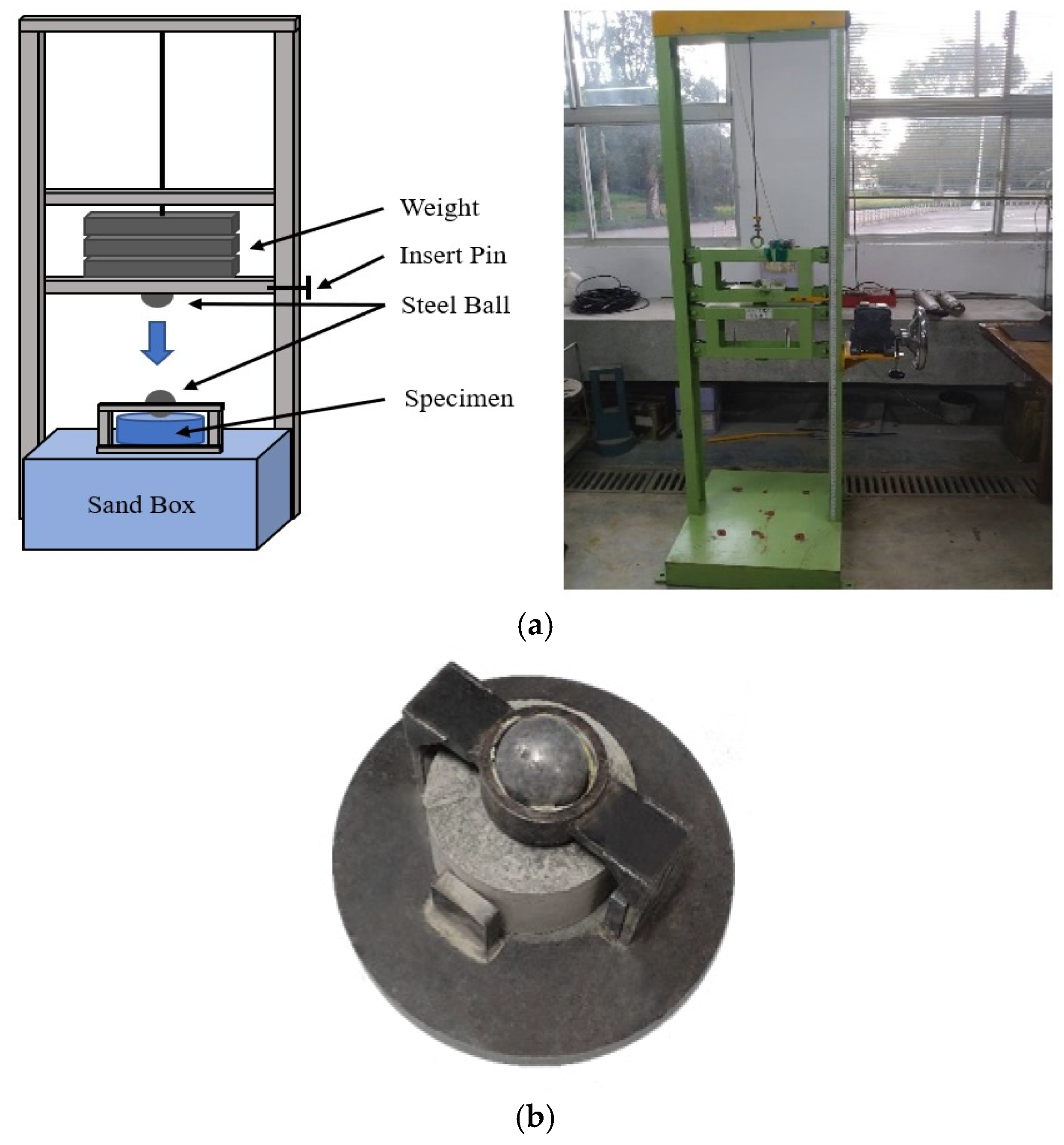
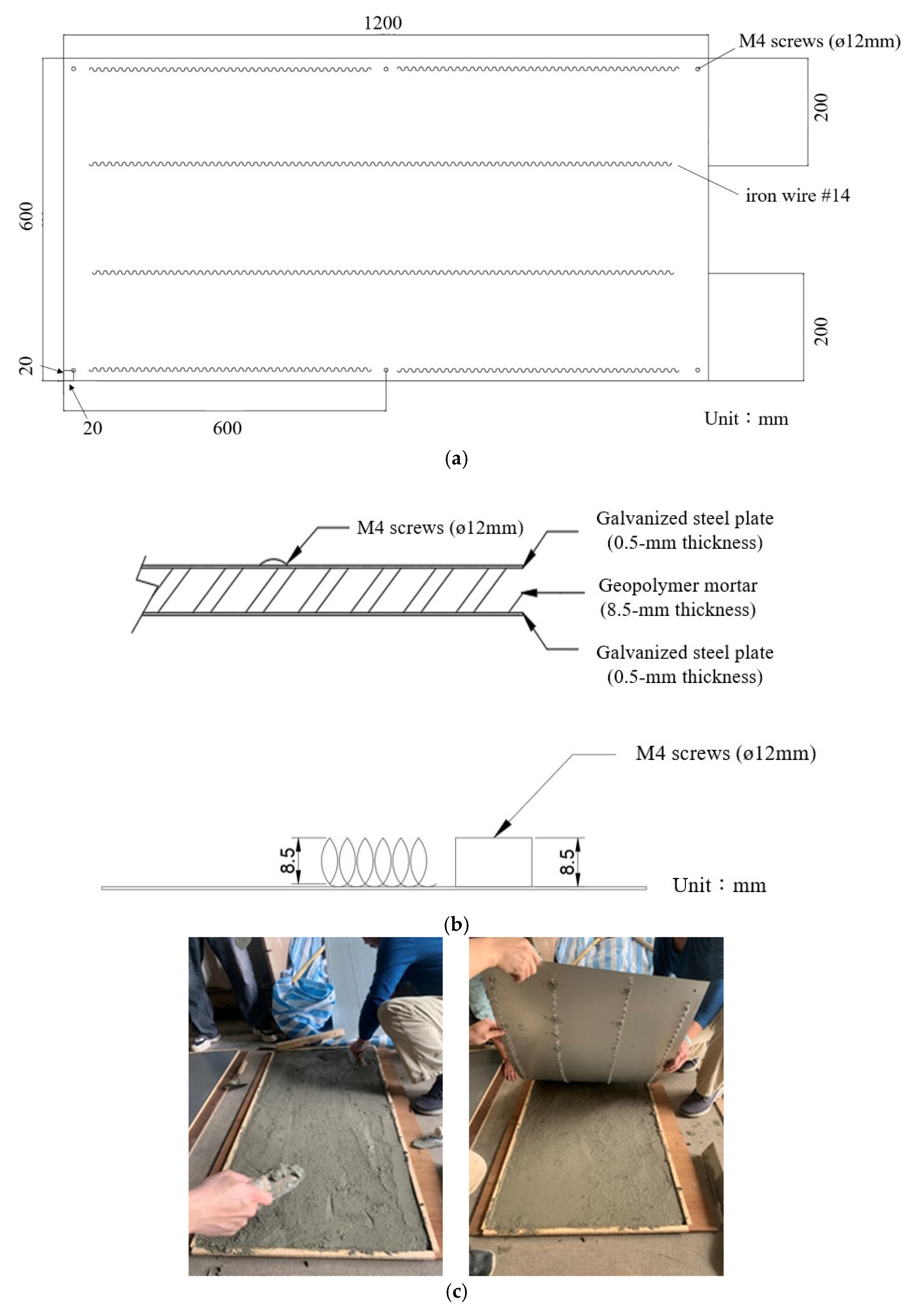




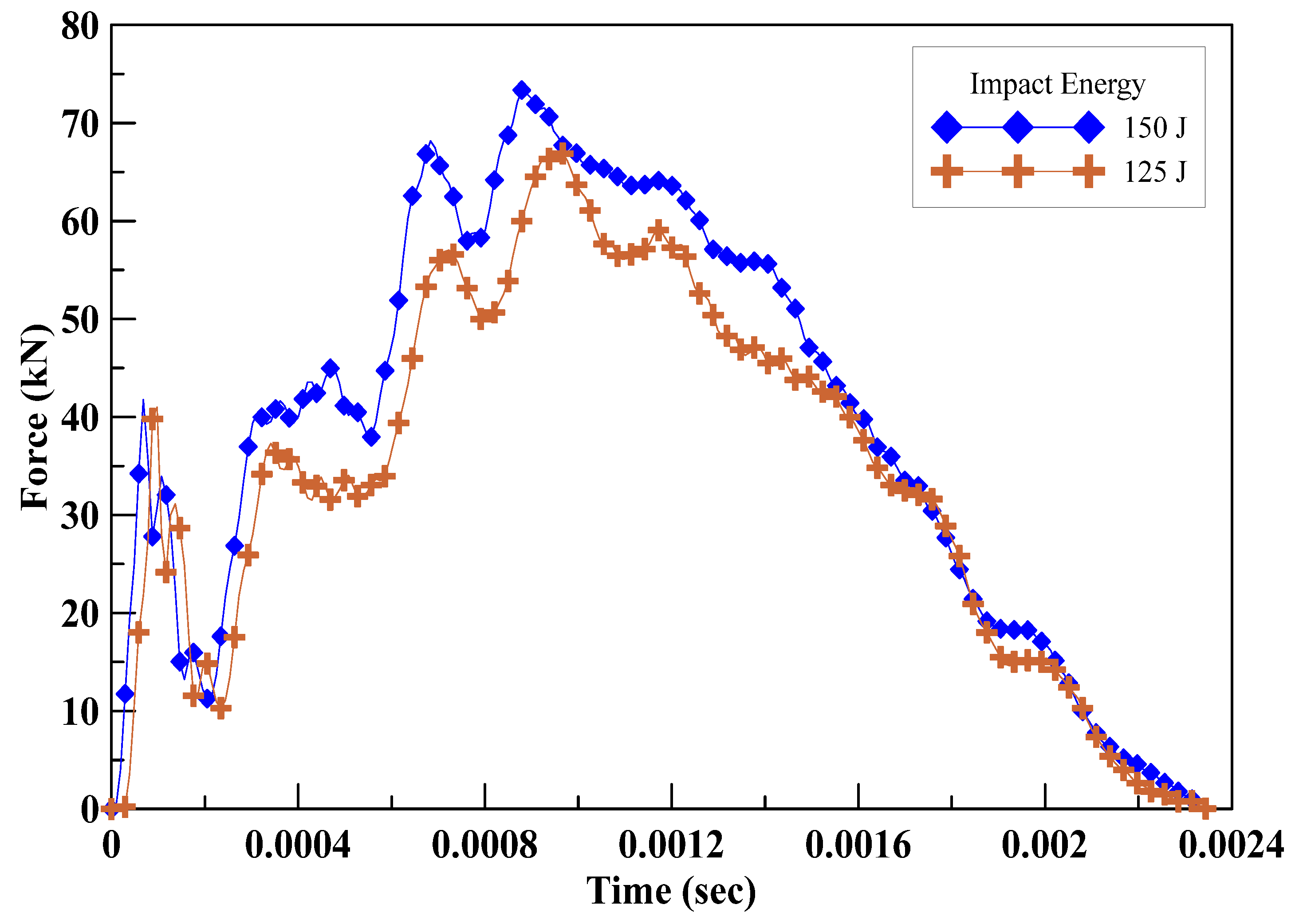
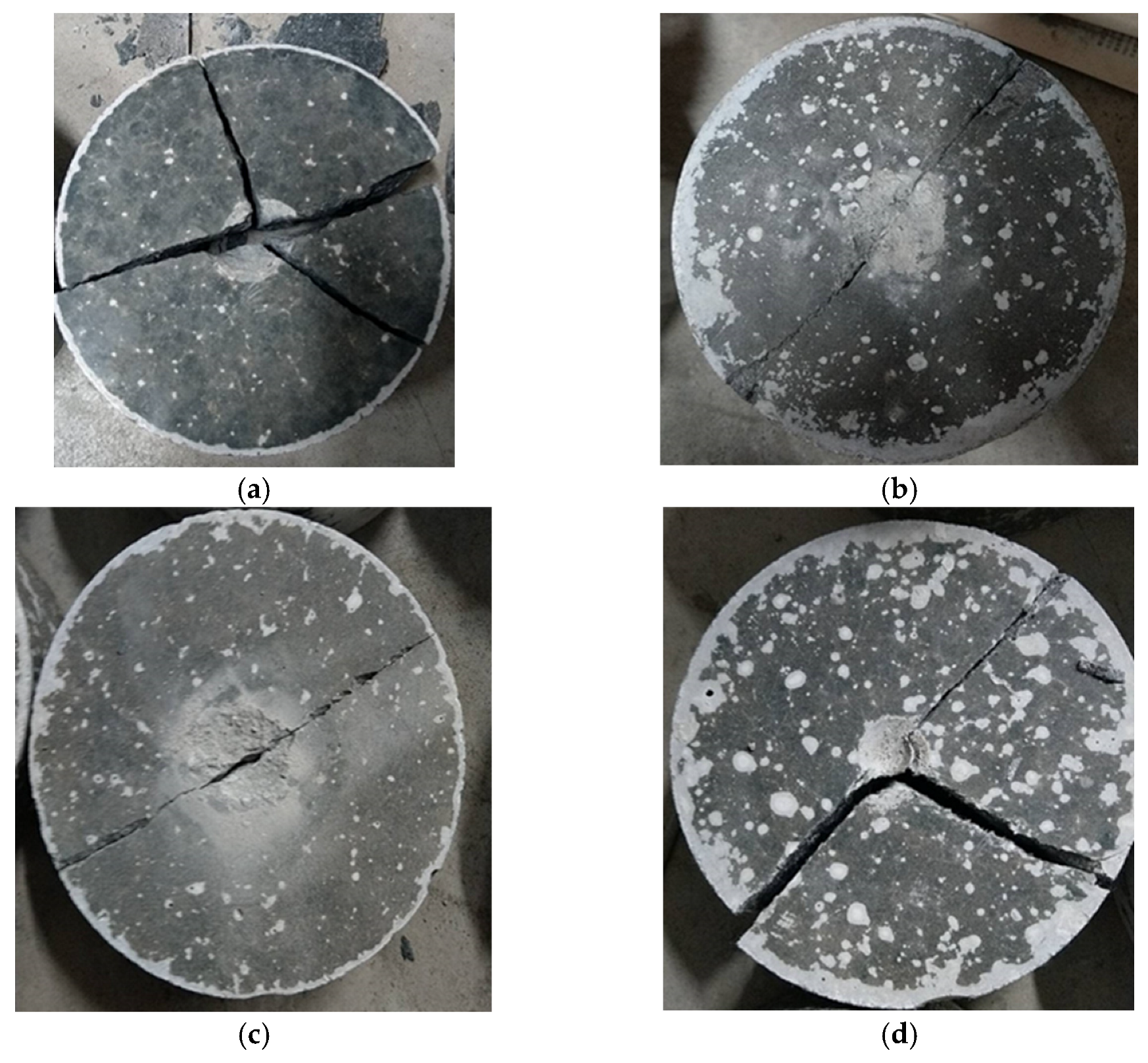


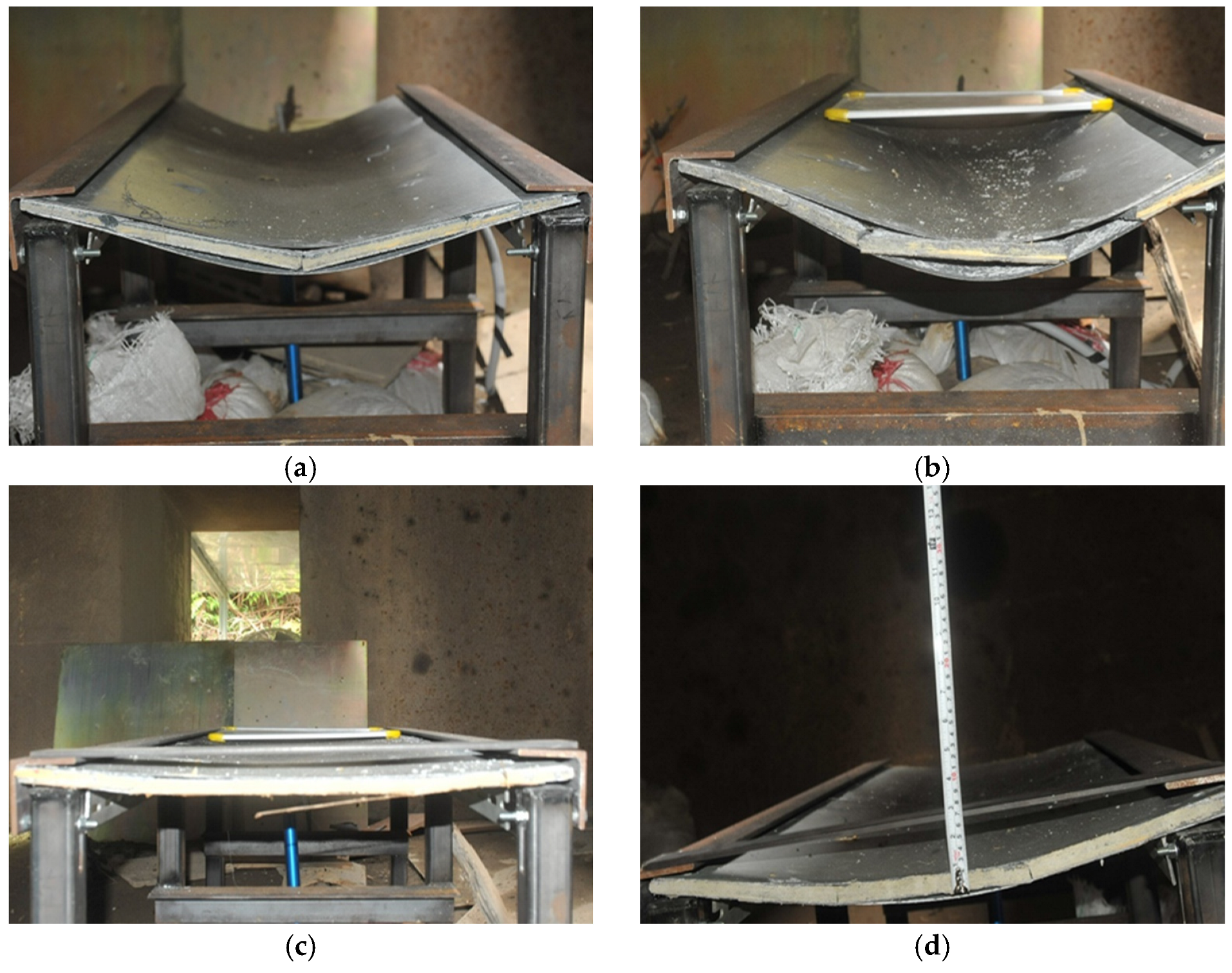

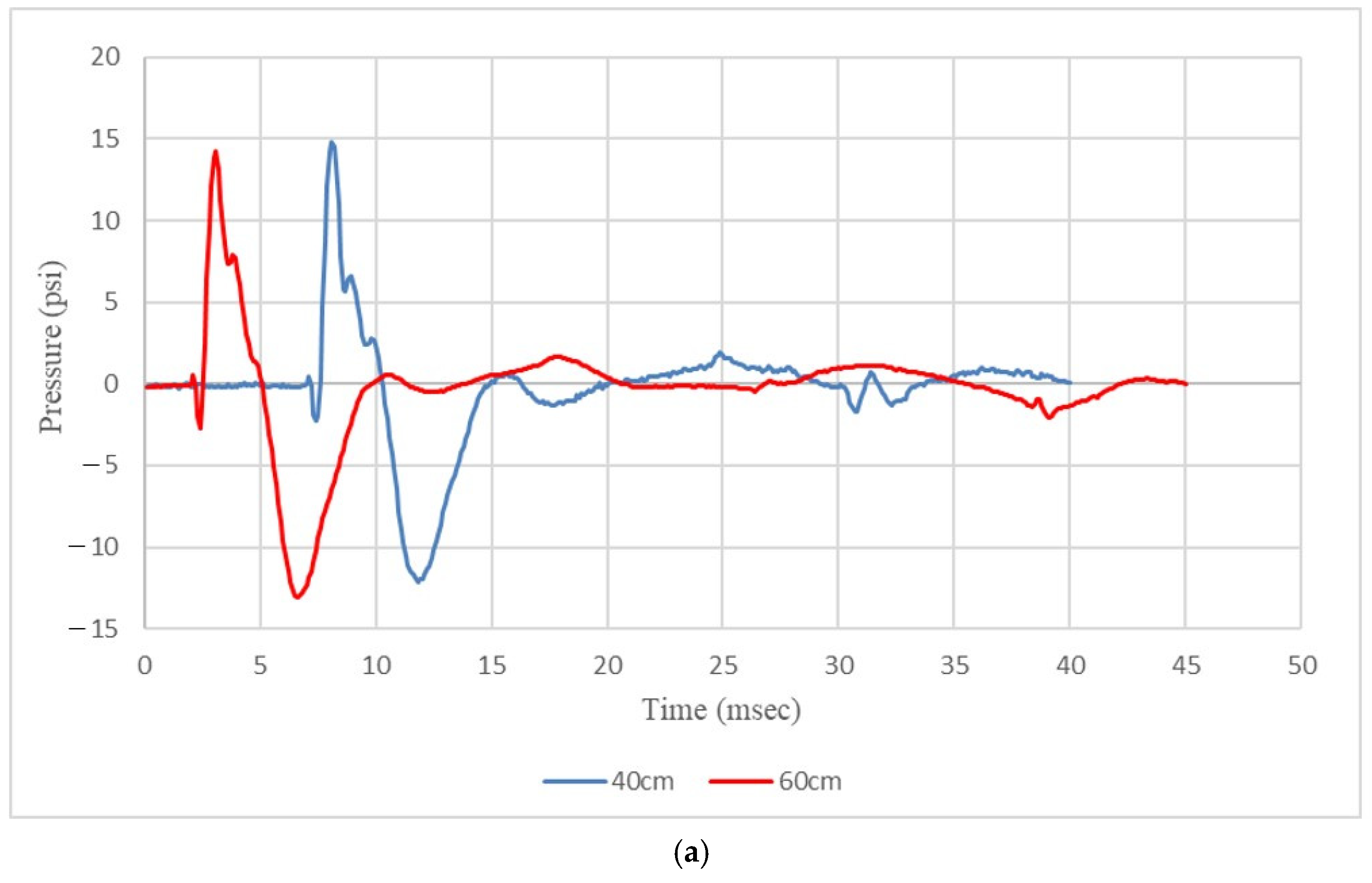

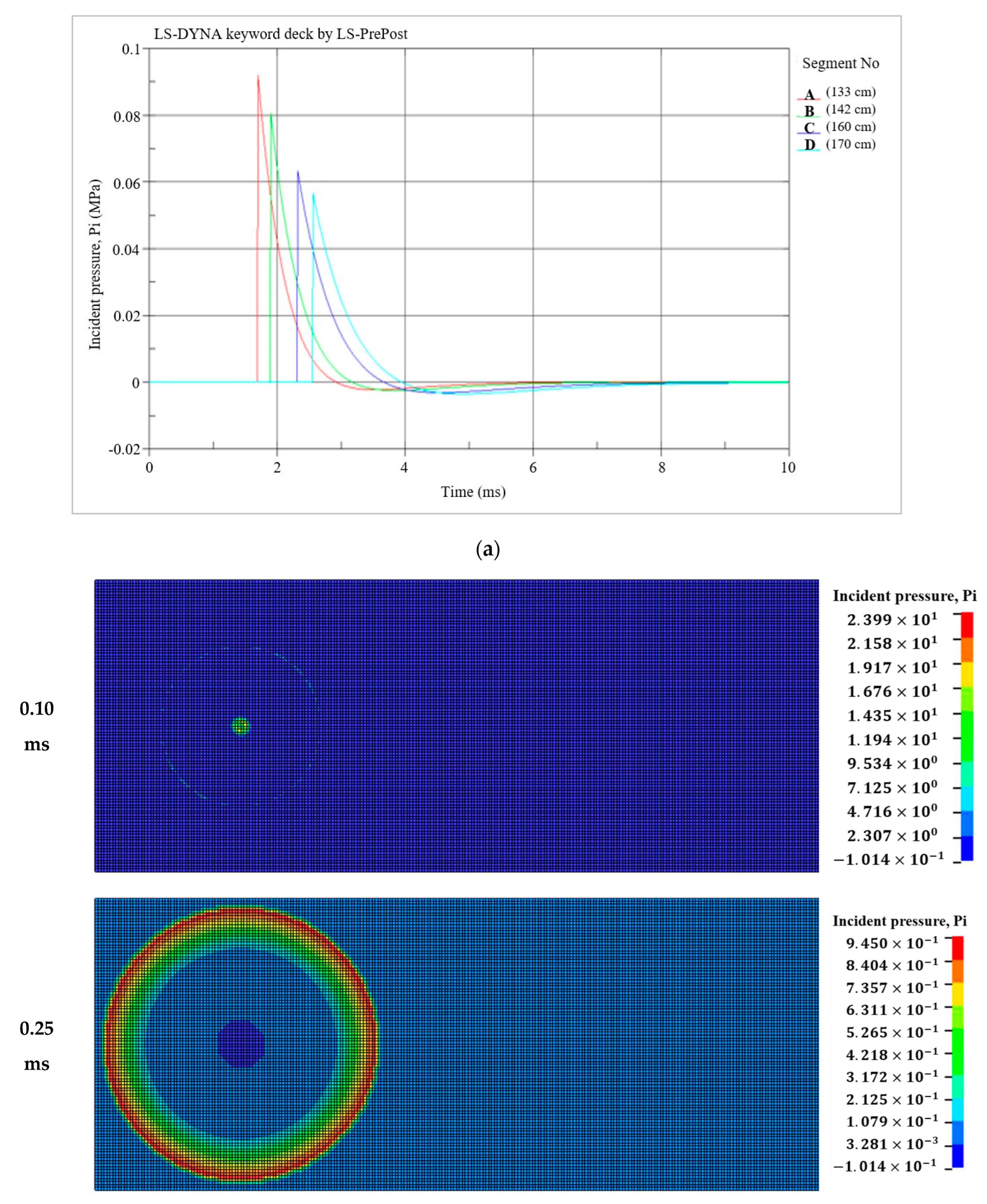
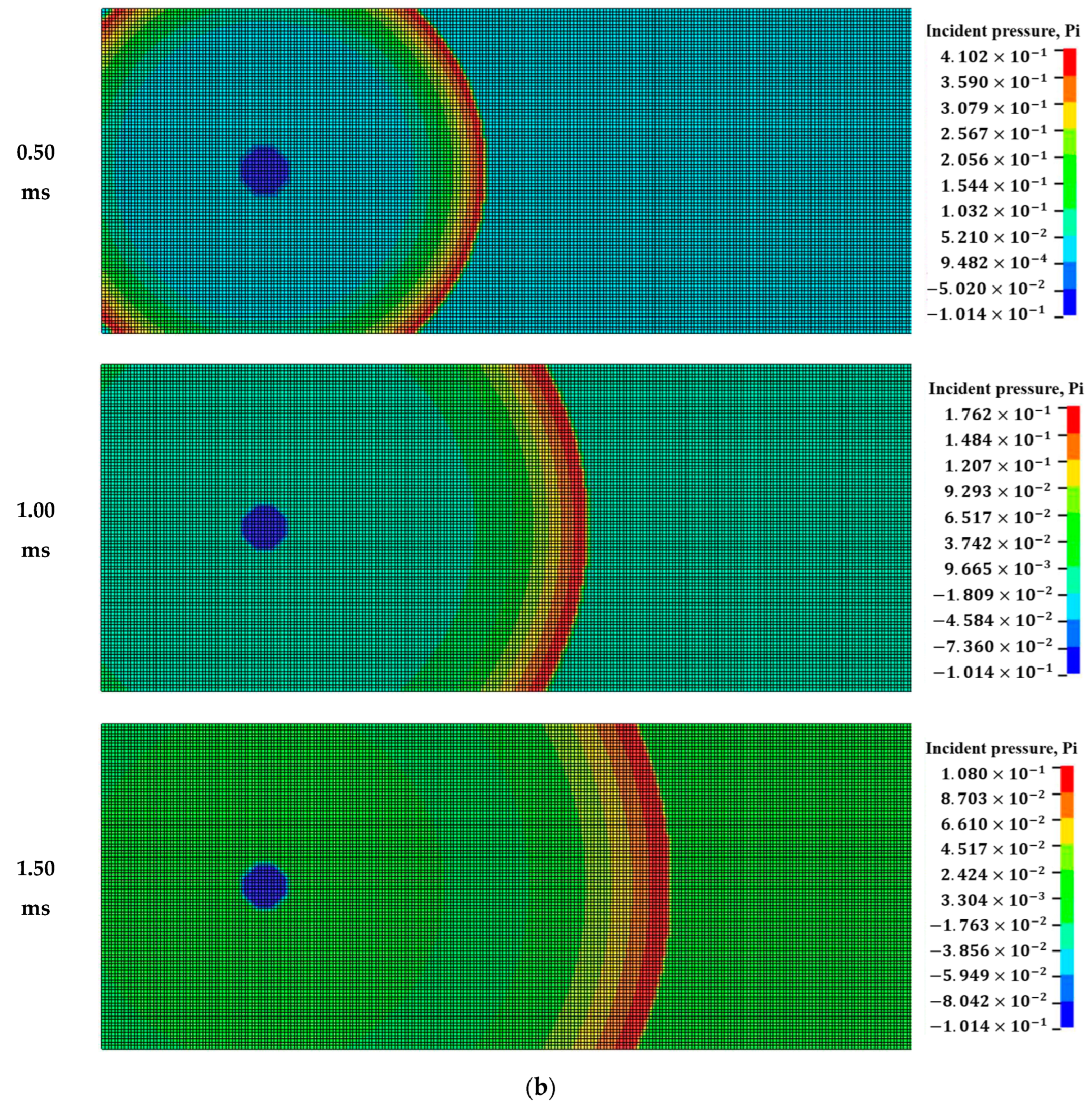


| Chemical Composition (wt. %) | GGBS | Wollastonite | Silica Fume |
|---|---|---|---|
| CaO | 57.4 | 37.5 | 0.3 |
| SiO2 | 27.4 | 58.1 | 96.8 |
| Al2O3 | 10.8 | 2.3 | 2.2 |
| Fe2O3 | 0.6 | 0.8 | - |
| K2O | 0.3 | - | 0.6 |
| TiO2 | 1.2 | - | - |
| L.O.I. * | 1.1 | - | - |
| Other | 1.2 | 1.3 | 0.1 |
| Specification | Carbon Fiber | Kevlar Fiber | Ultra-High Performance PE Fiber |
|---|---|---|---|
| Density (g/cm3) | 1.81 | 1.44 | 0.97 |
| Tensile Strength (MPa) | 3300~6000 | 2700~3600 | 1820~3640 |
| Specific Strength (MPa·cm3/g) | 2750 | 2080 | 2680~3600 |
| Tensile Modulus (GPa) | 230~550 | 60~145 | 79~123 |
| Break Elongation (%) | 0.7~2.1 | 2.4~3.6 | 3.0~5.0 |
| Deformation Temperature (°C) | 1500 | 450 | 200 |
| Abbreviation | Description |
|---|---|
| G-B | Geopolymer mortar benchmark |
| G-C | Geopolymer mortar reinforced with carbon fiber |
| G-C-K | Geopolymer mortar reinforced with carbon fiber and Kevlar fiber |
| G-C-U | Geopolymer mortar reinforced with carbon fiber and ultra-high performance PE fiber |
| Mix No. | GGBS | Wollastonite | Silica Fume | Borax | Sand/Binder Ratio | Liquid/Binder Ratio | Fiber | ||
|---|---|---|---|---|---|---|---|---|---|
| Carbon Fiber | Kevlar Fiber | Ultra-High Performance PE Fiber | |||||||
| (wt.%) | (wt.%) | (wt.%) | (wt.%) | (wt.%) | (wt.%) | (wt.%) | |||
| G-B | 100 | 10 | 1 | 2 | 1.2 | 0.55 | 0 | 0 | 0 |
| G-C | 1 | 0 | 0 | ||||||
| G-C-K | 0.5 | 0.5 | 0 | ||||||
| G-C-U | 0.5 | 0 | 0.5 | ||||||
| Specimen | Impact Energy (J) | 150 J | 125 J |
|---|---|---|---|
| Benchmark | Impact number | 1 | 1 |
| 1 | 1 | ||
| Average | 1 | 1 | |
| G-C | Impact number | 6 | 23 |
| 4 | 21 | ||
| Average | 5 | 22 | |
| G-C-K | Impact number | 2 | 43 |
| 3 | 51 | ||
| Average | 2.5 | 47 | |
| G-C-U | Impact number | 4 | 231 |
| 6 | 272 | ||
| Average | 5 | 251.5 |
| Specimen | Standoff Distance (m) | Explosive Charge (kg) | Scaled Distance (m/kg1/3) |
|---|---|---|---|
| Benchmark | 0.4 | 0.1 | 0.862 |
| 0.6 | 1.292 | ||
| G-C | 0.4 | 0.862 | |
| 0.6 | 1.292 | ||
| G-C-K | 0.4 | 0.862 | |
| 0.6 | 1.292 | ||
| G-C-U | 0.4 | 0.862 | |
| 0.6 | 1.292 |
| Specimen | Testing | Simulation | |||||||
|---|---|---|---|---|---|---|---|---|---|
| TIED Contact | AUTOMATIC Contact | ||||||||
| Average Deflection (mm) | Average Deflection (mm) | Difference (%) | Midspan Deflection (mm) | Difference (%) | Average Deflection (mm) | Difference (%) | Midspan Deflection (mm) | Difference (%) | |
| Benchmark | 134.5 | 15.6 | −88.4% | 16.1 | −88.0% | 67.7 | −49.7% | 66.9 | −50.3% |
| G-C-U | 108.5 | 17.1 | −84.2% | 15.7 | −85.5% | 60.3 | −44.4% | 58.6 | −46.0% |
| Benchmark | 102.5 | 8.5 | −91.7% | 8.0 | −92.2% | 49.9 | −51.3% | 48.5 | −52.7% |
| G-C-U | 62.5 | 9.3 | −85.1% | 7.1 | −88.6% | 48.6 | −22.2% | 46.9 | −25.0% |
| Specimen | Contact Keyword | Duration | Short Lateral View | Long Lateral View |
|---|---|---|---|---|
| Benchmark | TIED | 6 ms |  |  |
| 25 ms |  |  | ||
| AUTOMATIC | 6 ms |  |  | |
| 25 ms |  |  | ||
| G-C-U | TIED | 6 ms |  |  |
| 25 ms |  |  | ||
| AUTOMATIC | 6 ms |  |  | |
| 25 ms |  |  |
 Upper galvanized steel plate;
Upper galvanized steel plate;  Bottom galvanized steel plate;
Bottom galvanized steel plate;  Geopolymer mortar.
Geopolymer mortar.| Specimen | Contact Keyword | Duration | Short Lateral View | Long Lateral View |
|---|---|---|---|---|
| Benchmark | TIED | 6 ms |  |  |
| 25 ms |  |  | ||
| AUTOMATIC | 6 ms |  |  | |
| 25 ms |  |  | ||
| G-C-U | TIED | 6 ms |  |  |
| 25 ms |  |  | ||
| AUTOMATIC | 6 ms |  |  | |
| 25 ms |  |  |
 Upper galvanized steel plate;
Upper galvanized steel plate;  Bottom galvanized steel plate;
Bottom galvanized steel plate;  Geopolymer mortar.
Geopolymer mortar.Disclaimer/Publisher’s Note: The statements, opinions and data contained in all publications are solely those of the individual author(s) and contributor(s) and not of MDPI and/or the editor(s). MDPI and/or the editor(s) disclaim responsibility for any injury to people or property resulting from any ideas, methods, instructions or products referred to in the content. |
© 2023 by the authors. Licensee MDPI, Basel, Switzerland. This article is an open access article distributed under the terms and conditions of the Creative Commons Attribution (CC BY) license (https://creativecommons.org/licenses/by/4.0/).
Share and Cite
Chen, C.-C.; Tsai, Y.-K.; Lin, Y.-K.; Ho, P.-H.; Kuo, C.-Y. Experimental and Numerical Investigation of the Mechanical Properties of a Fiber-Reinforced Geopolymer Mortar Blast Resistant Panel. Polymers 2023, 15, 3440. https://doi.org/10.3390/polym15163440
Chen C-C, Tsai Y-K, Lin Y-K, Ho P-H, Kuo C-Y. Experimental and Numerical Investigation of the Mechanical Properties of a Fiber-Reinforced Geopolymer Mortar Blast Resistant Panel. Polymers. 2023; 15(16):3440. https://doi.org/10.3390/polym15163440
Chicago/Turabian StyleChen, Chien-Chin, Ying-Kuan Tsai, Yu-Kai Lin, Pin-Hsuan Ho, and Chang-Yu Kuo. 2023. "Experimental and Numerical Investigation of the Mechanical Properties of a Fiber-Reinforced Geopolymer Mortar Blast Resistant Panel" Polymers 15, no. 16: 3440. https://doi.org/10.3390/polym15163440







